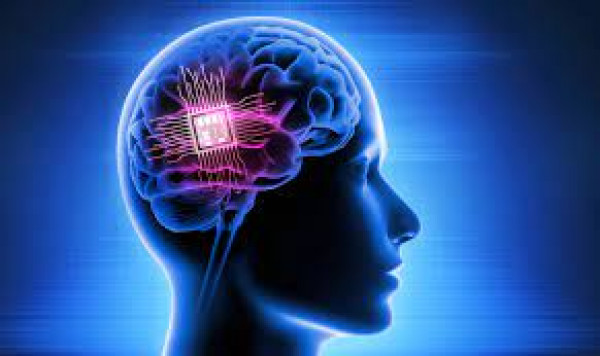
Neural Computer, Processor of Human Brain Neurons
by:
Hendrikus Franz Josef, M.Si\
(International Relations Observer, CEO The
https://www.youtube.com/@thehendrikuscenter2794)
The human brain is often considered the most complex structure in the known universe, with an estimated 100 billion neurons and trillions of synapses connecting them. The neural computer, or the processor of human brain neurons, is responsible for our thoughts, emotions, memories, and actions. As technology advances, scientists and researchers are trying to understand how the human brain works and replicate its processes in artificial neural networks.
The Processor of Human Brain Neurons is a complex system of interconnected neurons that work together to process information and control the functions of the human body. It is responsible for everything from simple reflexes to complex decision-making processes, as well as the creation and storage of memories.
Each neuron in the brain is a specialized cell that receives and transmits signals. The cell body contains the nucleus, which controls the cell's activities, and dendrites, which receive signals from other neurons. The axon, a long thin fiber, extends from the cell body and transmits signals to other neurons. When a neuron receives a signal, it generates an electrical impulse that travels down the axon and triggers the release of chemicals called neurotransmitters.
Neurotransmitters are chemical messengers that cross the synapse, a small gap between neurons, to transmit signals to the next neuron. This process is essential for communication between neurons and is the basis of all brain function.
The Processor of Human Brain Neurons operates through a complex system of neural networks. These networks consist of interconnected neurons that work together to process information. Each neuron in the network receives input from many other neurons, processes this information, and then sends output to other neurons in the network.
The process of neural processing is incredibly complex, with billions of neurons working together in parallel to create complex patterns of activity. These patterns of activity underlie all aspects of brain function, from simple reflexes to complex cognitive processes.
One of the most remarkable aspects of the Processor of Human Brain Neurons is its ability to adapt and change in response to experience. This process, known as neuroplasticity, is essential for learning and memory. It allows the brain to form new connections between neurons, strengthen existing connections, and even create entirely new neurons in response to experience.
The Processor of Human Brain Neurons is also responsible for the storage and retrieval of memories. Memories are stored in networks of neurons that are distributed throughout the brain. When a memory is retrieved, the neurons in the network are reactivated, recreating the pattern of activity that was present when the memory was formed.
Neurons are specialized cells that transmit information through electrical and chemical signals. They have a cell body, dendrites that receive signals from other neurons, and an axon that sends signals to other neurons. When a neuron receives a signal, it creates an electrical impulse that travels down the axon and triggers the release of chemicals called neurotransmitters. These neurotransmitters cross the synapse, the small gap between neurons, and bind to receptors on the receiving neuron, continuing the electrical signal.
The human brain processes information in parallel, with many neurons firing at the same time to create complex patterns of activity. This parallel processing allows the brain to perform tasks that would be impossible for a traditional computer, such as recognizing faces, understanding language, and making decisions based on incomplete information.
Artificial neural networks are modeled after the structure and function of the human brain. They consist of layers of interconnected nodes, or artificial neurons, that process information in a similar way to biological neurons. Each node receives input from multiple nodes in the previous layer and applies a mathematical function to determine its output. The output of each node is then sent to nodes in the next layer, and so on, until the final output is produced.
One of the key advantages of artificial neural networks is their ability to learn from data. By adjusting the strengths of the connections between nodes, or the weights, the network can learn to recognize patterns in the data and make predictions or classifications. This process, known as training, is often done using a process called backpropagation, which adjusts the weights based on the difference between the network's output and the desired output.
Despite their similarities to the human brain, artificial neural networks are still limited in their capabilities. They require large amounts of data and computing power to train, and their performance can be sensitive to the quality and quantity of the data. Additionally, they often lack the flexibility and adaptability of the human brain, which can quickly learn and adapt to new situations.
Research into the neural computer is ongoing, and many scientists and engineers are working to develop more advanced and efficient artificial neural networks. One promising area of research is neuromorphic computing, which seeks to replicate the structure and function of biological neurons using hardware instead of software. Neuromorphic processors could potentially perform certain tasks faster and more efficiently than traditional computers, and they could be used in a variety of applications, from image recognition to robotics.
The neural computer, or processor of human brain neurons, is a complex and fascinating system that has inspired researchers to create artificial neural networks. While these networks are still limited in their capabilities, they have shown great promise in areas such as image recognition, natural language processing, and robotics. As technology continues to advance, we may one day see artificial neural networks that rival the processing power and flexibility of the human brain. The Processor of Human Brain Neurons is a complex system of interconnected neurons that work together to process information and control the functions of the human body. It operates through a complex system of neural networks, with billions of neurons working together in parallel to create complex patterns of activity. Its ability to adapt and change in response to experience, as well as its role in memory storage and retrieval, are essential for all aspects of brain function.
Opini Lainnya
 Singapore : The Fine City, Fine Library
Singapore : The Fine City, Fine Library
Singapore: The Fine city demikian semboyan negara dengan julukan negeri singa itu, dan memang benar, menjejakkan kaki untuk...
 Indonesia Has Strongly Condemned Israel
Indonesia Has Strongly Condemned Israel
Indonesia Has Strongly Condemned Israel by. Hendrikus Franz Josef, M.Si (International Relations Observer, CEO The Hendrikus...
 Istansi , Perlu Menangani Arsip Media Baru
Istansi , Perlu Menangani Arsip Media Baru
Istansi , Perlu Menangani Arsip Media Baru Oleh : Anna N. Nuryani, Dra Penyelenggaraan kearsipan sehari-hari di Instansi,...
 OLEH-OLEH DARI JEPANG BAGIAN PERTAMA
OLEH-OLEH DARI JEPANG BAGIAN PERTAMA
OLEH-OLEH DARI JEPANGSuatu pengalaman ketika ditugaskan ke Kyoto Jepang selama semingguOleh :AlipSudardjoBAGIAN PERTAMA Jepang...

 Penyerahan Buku KCKR dari Lintang Pustaka Utama
Penyerahan Buku KCKR dari Lintang Pustaka Utama